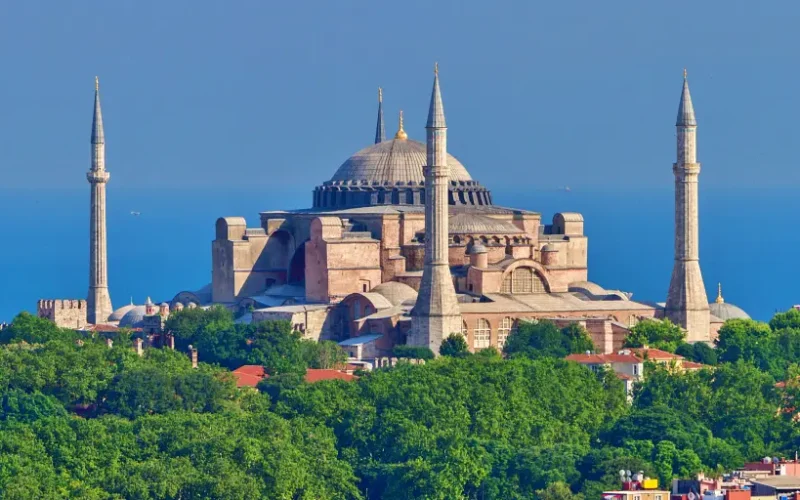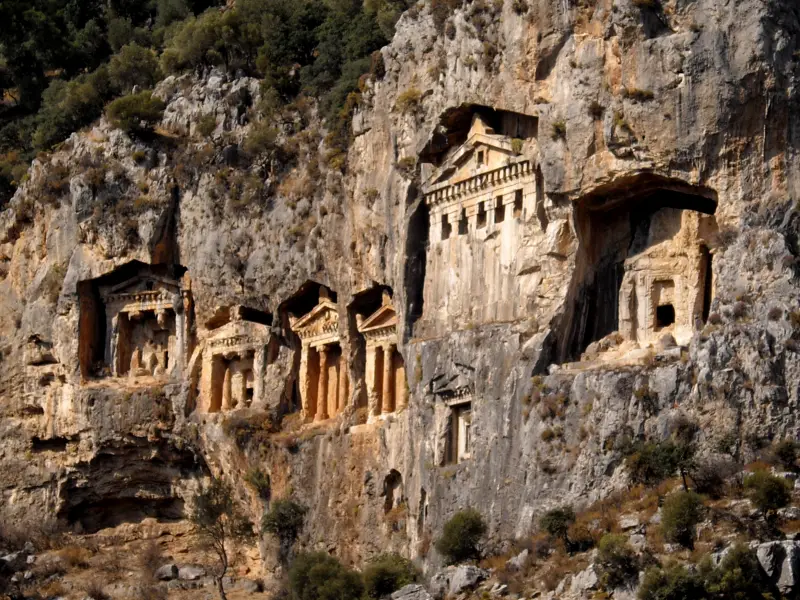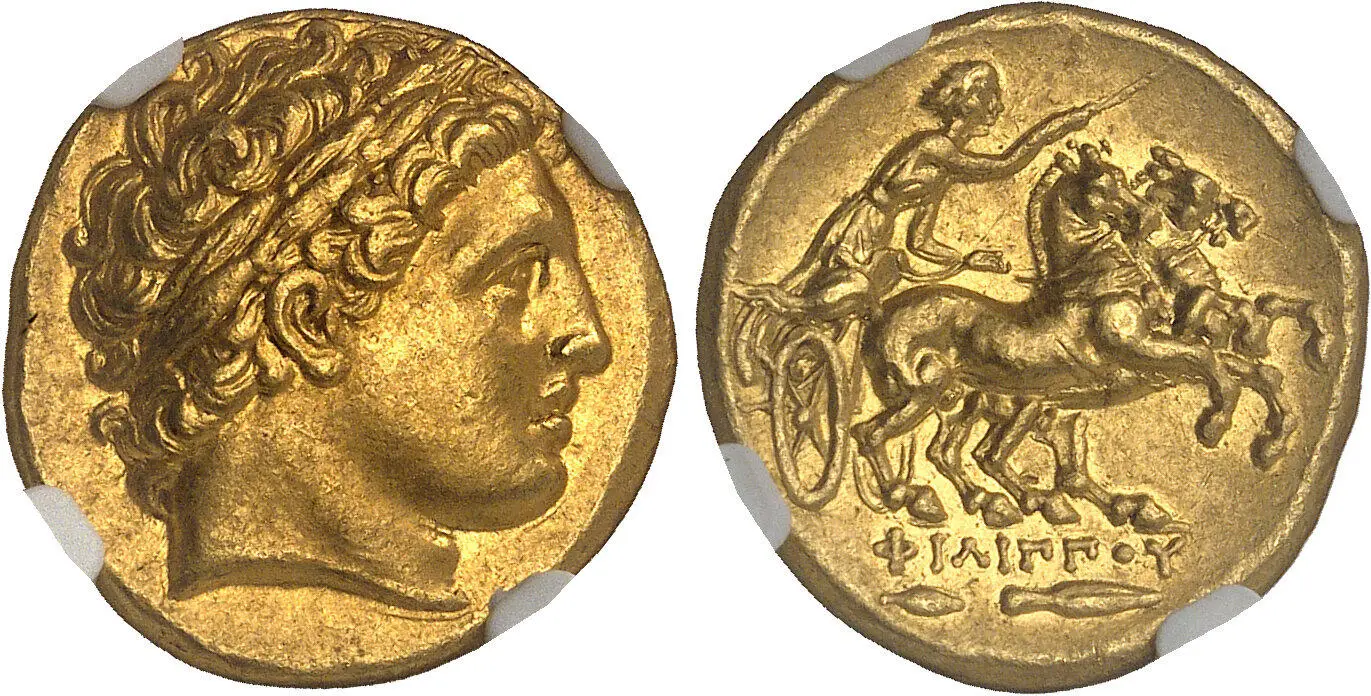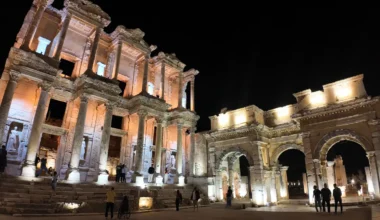When was Hagia Sophia built? Who built Hagia Sophia? What is the significance of Hagia Sophia? and What are the architectural features of Hagia Sophia? so What happened to Hagia Sophia after the Ottoman conquest? What is the current status of Hagia Sophia? Why did Turkey turn Hagia Sophia into a mosque? We will answer all the questions about Hagia Sophia and provide you with perfect pictures! let’s dive into it! Do you wonder when ramadan 2025 is?
Hagia Sophia Church or Mosque?
Nestled in the heart of Istanbul, the historic crossroads of Europe and Asia, stands a magnificent testament to the convergence of cultures, religions, and architectural brilliance – Hagia Sophia. Also known as the “Church of Holy Wisdom,” this iconic structure has witnessed the rise and fall of empires, the transition of faiths, and the enduring power of human creativity. With its resplendent domes, mesmerizing mosaics, and rich history, Hagia Sophia remains a captivating marvel that continues to inspire awe and wonder.
When was Hagia Sophia built? Who built it?
Hagia Sophia’s journey through time began in the year 537 AD. The construction of this architectural wonder was initiated by the Byzantine Emperor Justinian I, a visionary ruler with a deep appreciation for art and architecture. The Hagia Sophia we see today is actually the third incarnation of the structure on the same site, with the previous two being destroyed by different calamities.
The Significance of Hagia Sophia
Hagia Sophia’s significance stretches beyond its physical presence. Initially built as the Great Church of Constantinople, it held the distinction of being the world’s largest cathedral for nearly a thousand years. The structure was not just an architectural achievement but a symbol of Byzantine imperial power and the Orthodox Christian faith. The awe-inspiring dome, a hallmark of Hagia Sophia’s design, represented the heavens and was a testament to the grandeur of the Divine.
Architectural Features
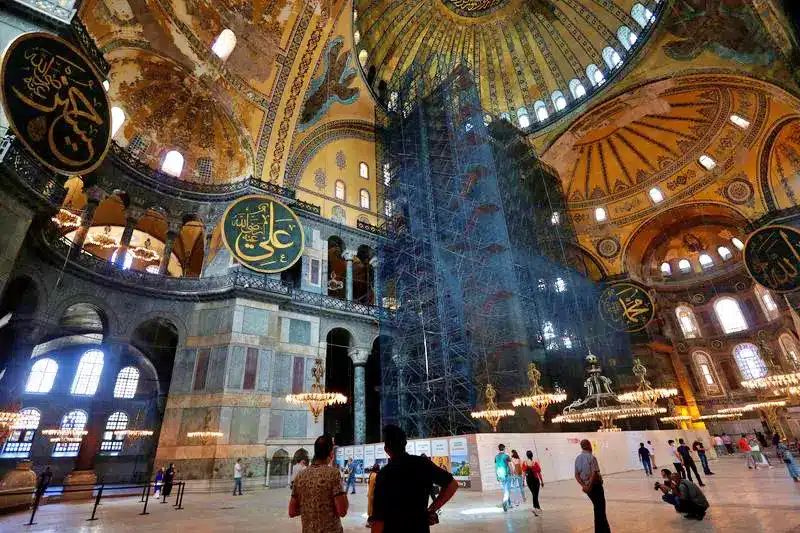
The architectural features of Hagia Sophia are a masterpiece that blends Byzantine and Greek influences. Its massive dome, an engineering marvel of its time, seems to float effortlessly above the vast interior space. The innovative use of pendentives – triangular curved segments – allowed for the smooth transition from the square base to the circular dome. The interior is adorned with intricate mosaics depicting religious figures, scenes, and patterns. These mosaics, often featuring gold leaf, create an ethereal ambiance as light dances upon them. The dome itself is adorned with windows that seem to bring the heavens closer, casting a divine light that changes with the time of day.
Hagia Sophia after the Ottoman Conquest
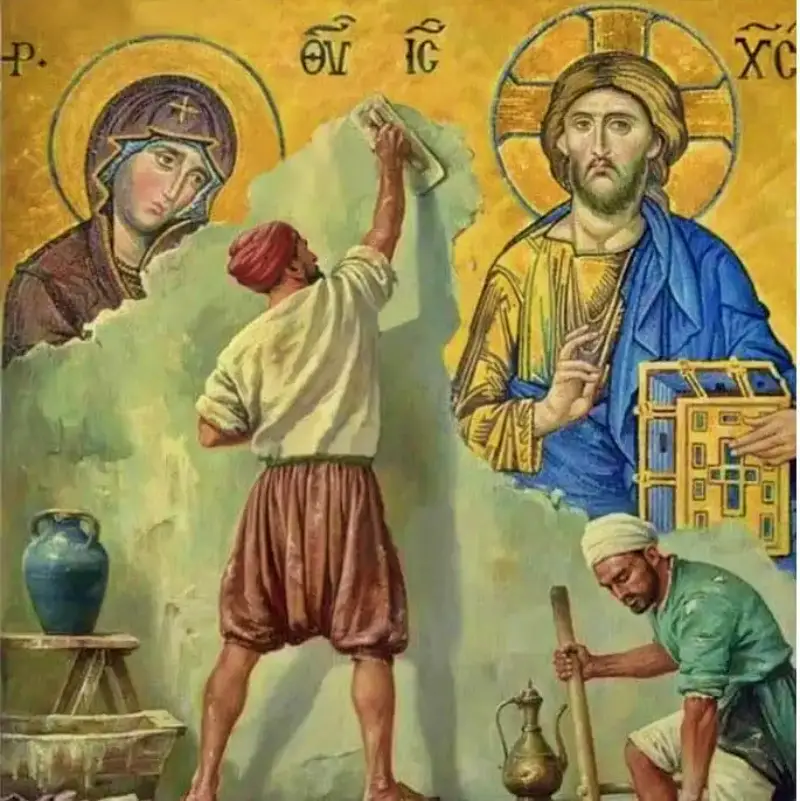
The Ottoman conquest of Constantinople in 1453 marked a pivotal moment in Hagia Sophia’s history. Under Ottoman rule, the structure was converted into a mosque, with minarets added to its exterior. The mosaics depicting Christian imagery were covered or removed, reflecting the shift in religious affiliation. Despite the changes, the architectural brilliance of Hagia Sophia continued to inspire awe, even as the surrounding city transformed into Istanbul.
The Current Status of Hagia Sophia
The journey of Hagia Sophia took another turn in 1935 when it was transformed into a museum by Mustafa Kemal Atatürk, the founder of modern Turkey. This move aimed to emphasize the secular nature of the newly formed Republic of Turkey. The museum status allowed Hagia Sophia to be a symbol of shared cultural heritage, transcending religious boundaries and serving as a testament to the coexistence of different traditions.
Mosque Once Again
In recent times, It has witnessed another transformation. In 2020, Turkey’s highest administrative court ruled that Hagia Sophia should be a mosque. This decision sparked debates on the preservation of cultural heritage and the impact on interfaith relations. The structure’s status change has once again made it a place of active worship, while still welcoming visitors from around the world to marvel at its splendor.
Why Turkey Turned Hagia Sophia into a Mosque
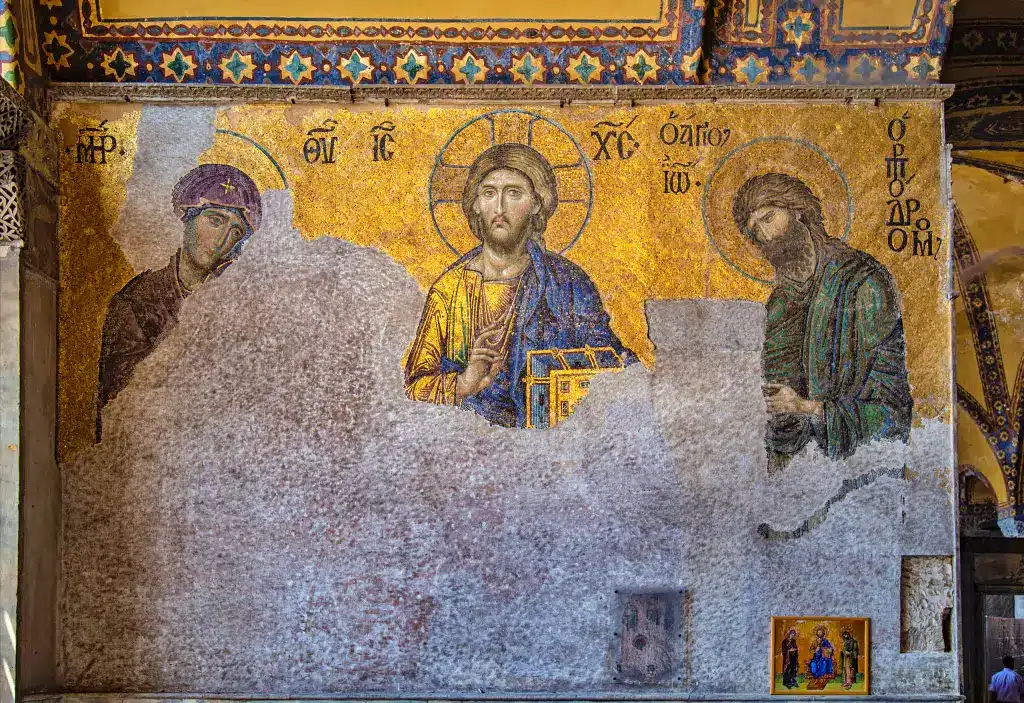
The decision to turn Hagia Sophia back into a mosque was multifaceted. For some, it was as a reclamation of Turkey’s Ottoman past and a reflection of the country’s Muslim majority. Others celebrated it as a matter of national sovereignty and an assertion of cultural identity. However, the move also garnered criticism from those concerned about the impact on its historical and cultural significance.
Exploring the Architectural Marvels: Hagia Sophia and the Blue Mosque
A visit to Istanbul offers the chance to explore not just Hagia Sophia but also the nearby Blue Mosque (Sultan Ahmed Mosque), showcasing the exquisite harmony between Byzantine and Islamic architectural styles. While it boasts its grand dome and Byzantine mosaics, the Blue Mosque captivates with its stunning blue tiles, cascading domes, and intricate minarets. These two iconic structures stand as a testament to the rich cultural tapestry that Istanbul weaves.
History of Hagia Sophia
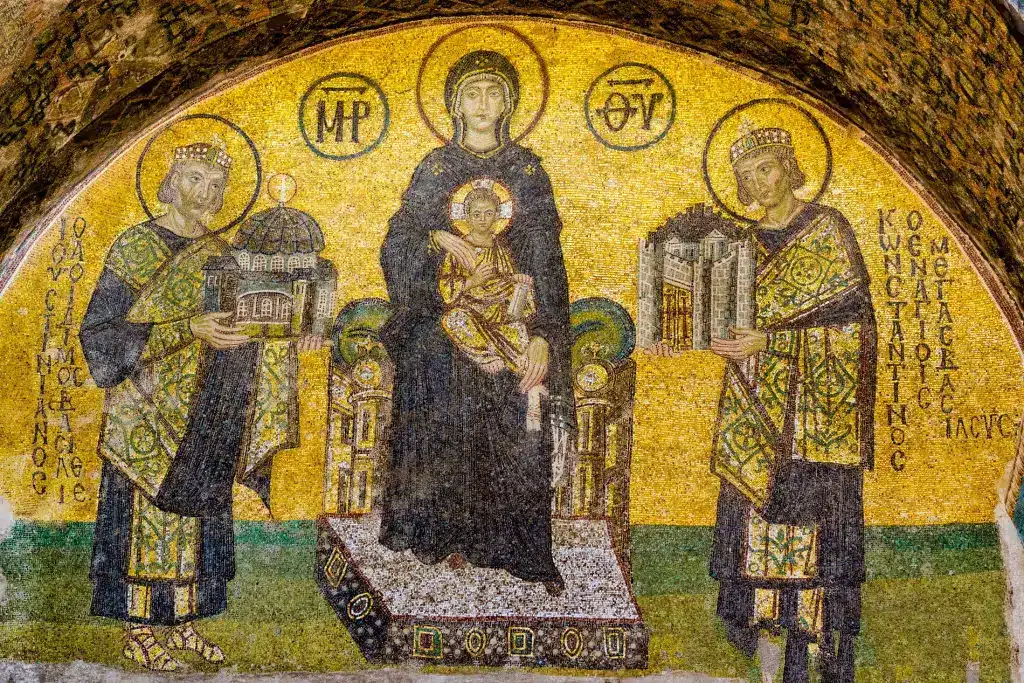
In the heart of a historic city where continents converge, an awe-inspiring structure stands as a testament to the ebb and flow of civilizations. Erected over centuries, its soaring dome and intricate design reflect the ingenuity of its creators. Its origins trace back to a ruler’s ambitious vision, a symbol of power and faith.
As time unfurled, this majestic edifice witnessed the rise and fall of empires. It underwent a transformation that mirrored the shifting sands of politics and belief systems. A conquest brought a new chapter, altering its purpose and outward appearance. Mosaics that once adorned its interior were concealed, reflecting a changing worldview.
Yet, its significance endured. An enlightened mind recognized its historical value, and it was repurposed to encompass a broader narrative. Becoming a repository of cultural treasures, it welcomed visitors from around the world. Its walls whispered stories of the past while embracing the diversity of the present.
In more recent years, discussions arose about its identity. The decision to shift its function once again sparked debates about heritage, identity, and the delicate balance between tradition and progress. Through these dialogues, it remained a canvas upon which societies projected their aspirations and values.
Today, this architectural masterpiece stands at a crossroads. Its evolution continues, a reflection of the ever-changing tapestry of human history. As the world gazes upon its magnificence, it is not just a structure that is observed, but a living chronicle of human endeavor and the unceasing passage of time.
Preserving the Past, Embracing the Future
As the church evolves through time, it remains a symbol of Istanbul’s ability to embrace its past and he future. The structure’s history reflects the ever-changing tides of human civilization. The rise and fall of empires, the transformation of faiths, and the enduring spirit of creativity remain!. The debates surrounding its status remind us that cultural heritage is not stagnant. It is a living entity that evolves with the societies that cherish it.
Hagia Sophia, with its grandeur, history, and cultural significance, stands as a bridge between worlds. It is a testament to the resilience of human creativity and the boundless capacity for architectural brilliance. Since the Byzantine Empire to being a mosque, The church or Museum continues to capture all who lay eyes upon it. As visitors explore its halls and gaze upon its domes, they are not just witnessing a physical structure. They are beholding a living embodiment of the interplay between cultures, faiths, and the remarkable achievements of humanity.
We have tried to provide you with sufficient information about the landmark. However, it is now a mosque for now. No one even Turks don’t know what it will be or whether it will be able to remain as a mosque for another 50 years. The world is changing and we will keep you updated!
If you are into history, You should read our blogs about Gobekli Tepe, Karahan Tepe and Boncuklu Tarla!
